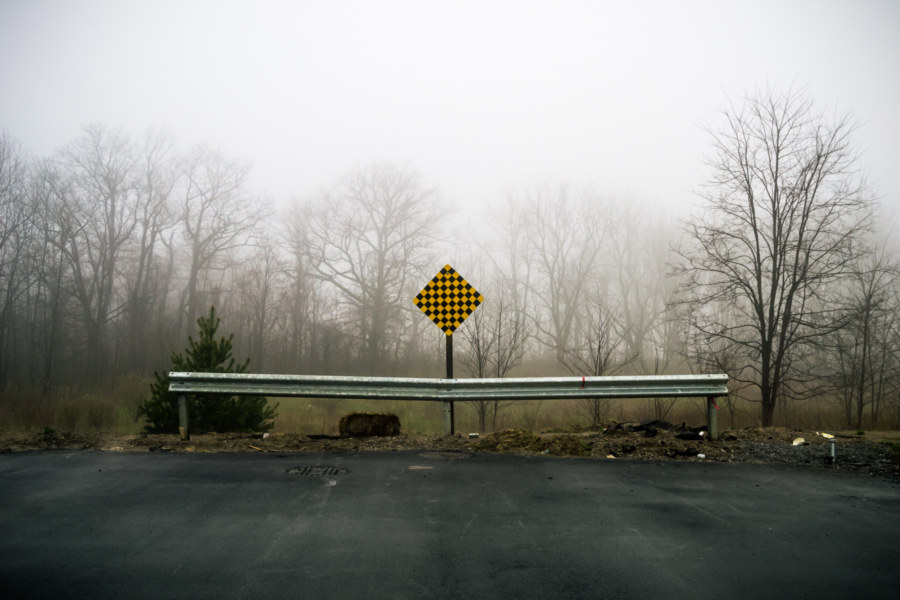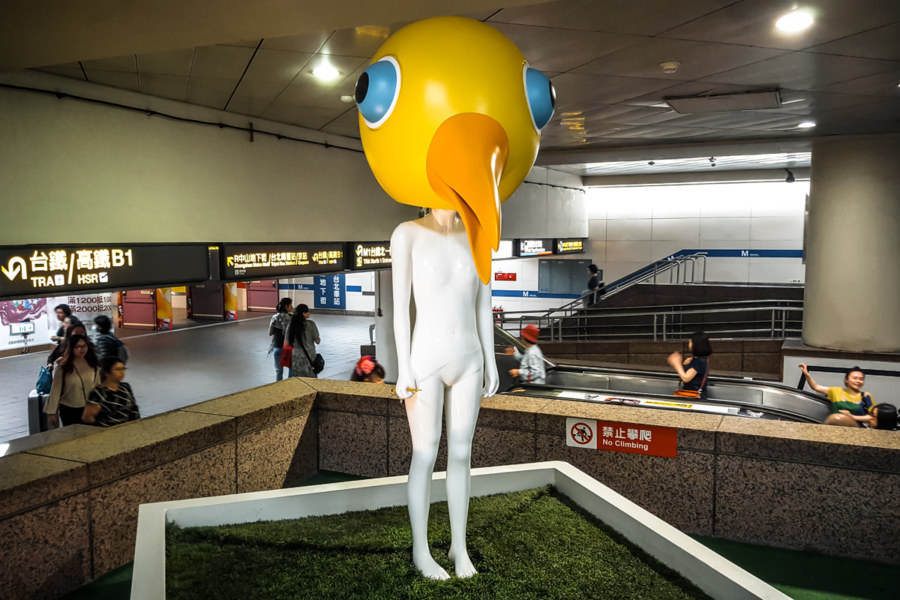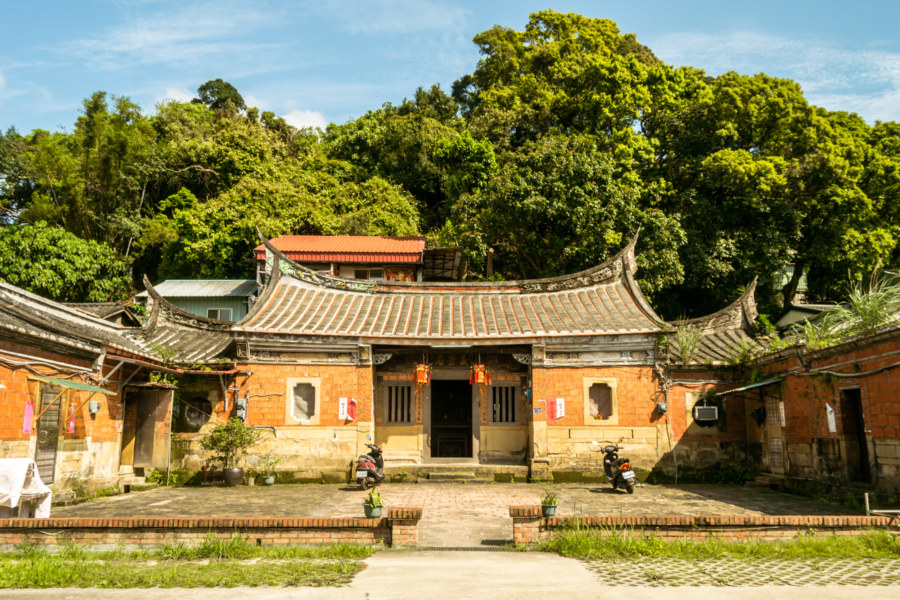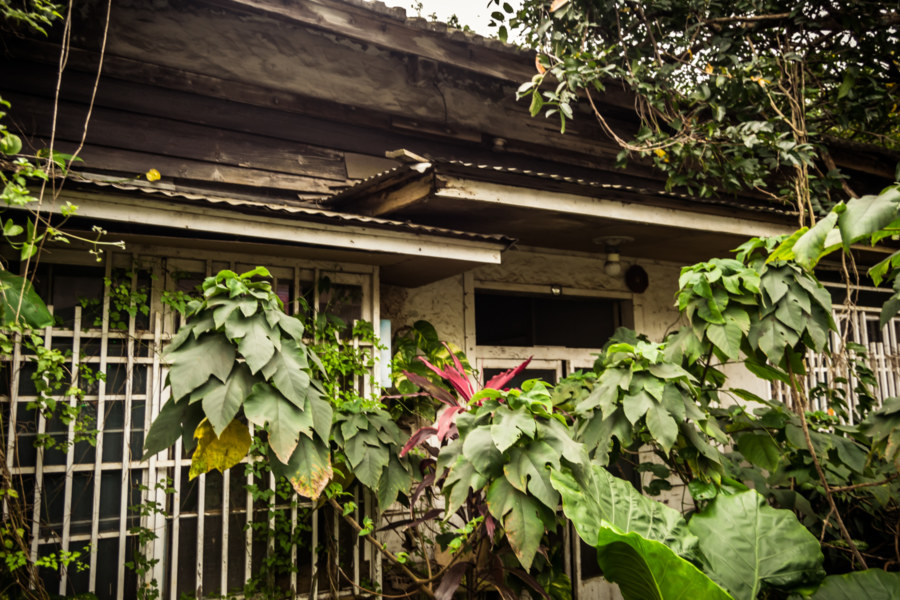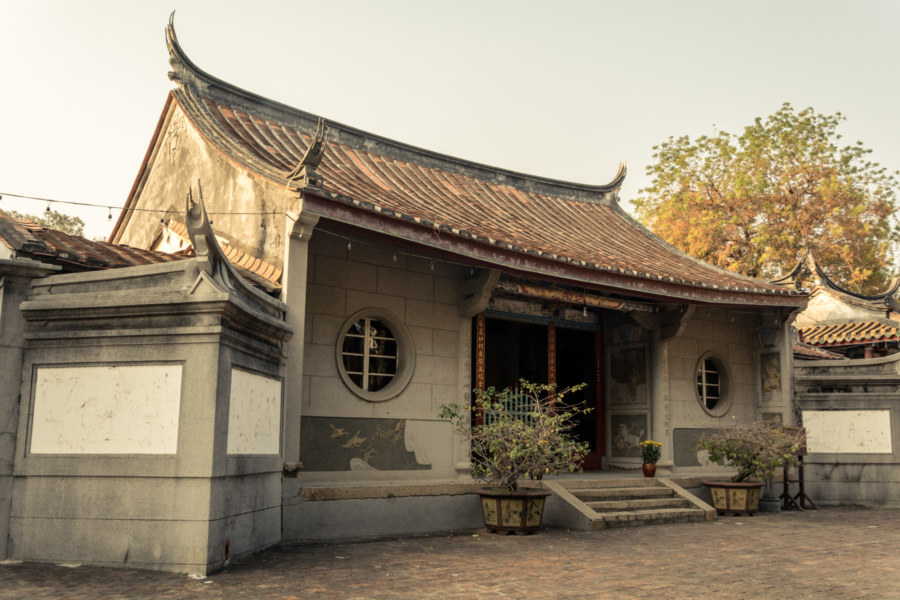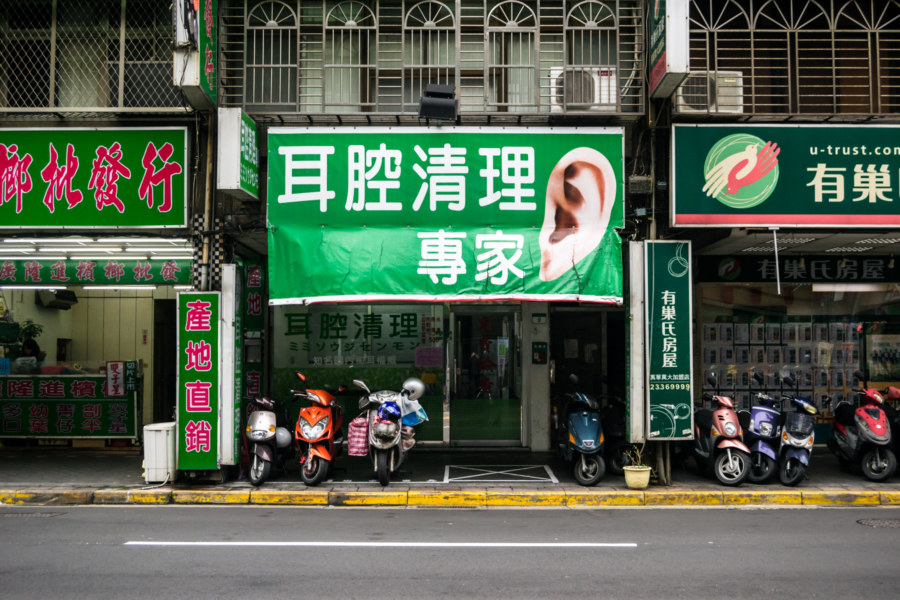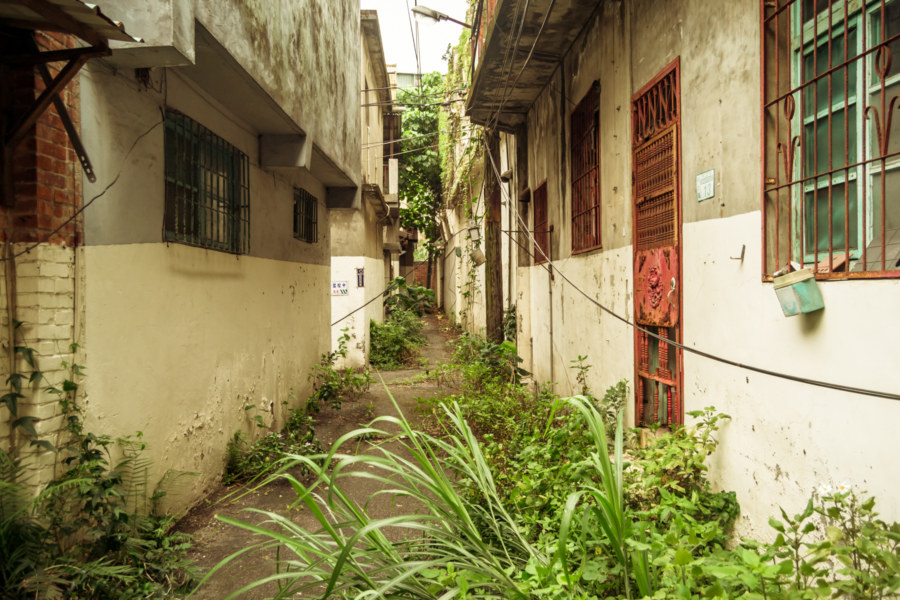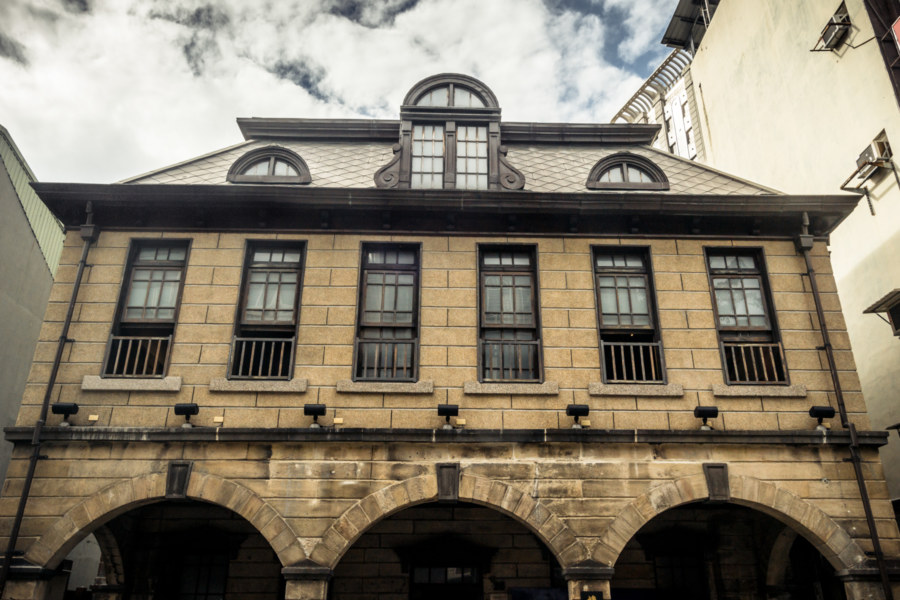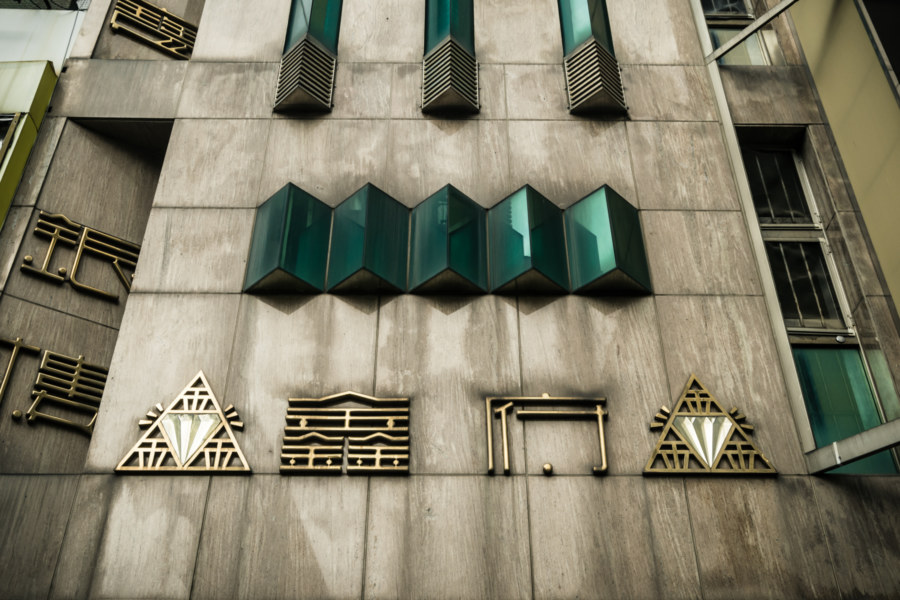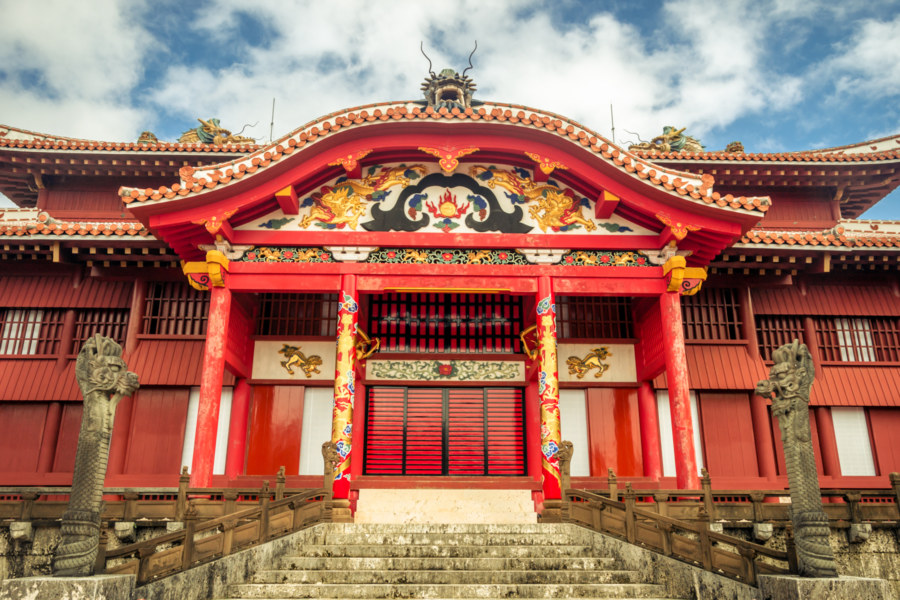I came of age on the edge of suburbia, where cookie-cutter housing projects end and the surrounding countryside begins. Decades later, again I find myself perched on the edge, further west than when I was young but still at the very end of one little patch of suburban sprawl.
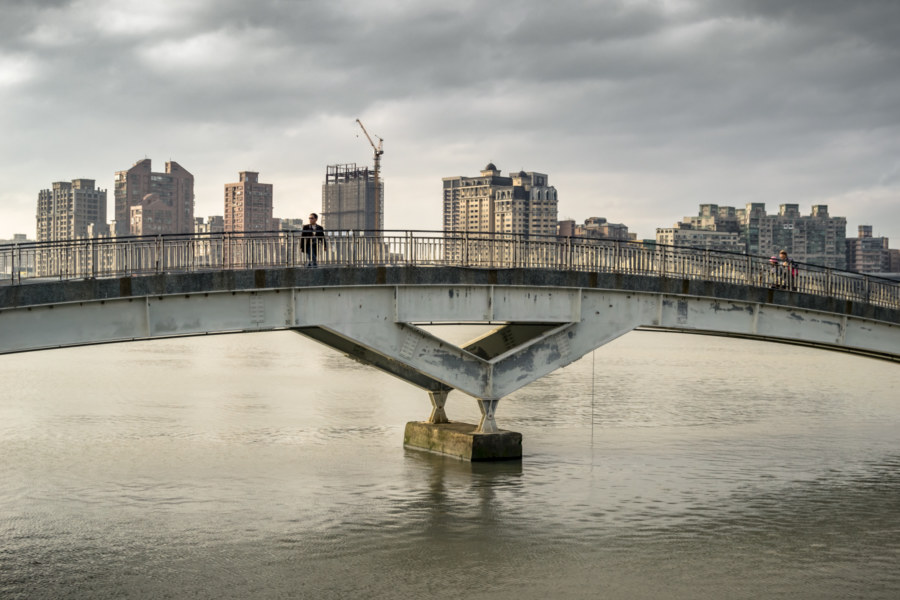
Exploring the urban condition: the buildings that tower over all, the rhythm of the streets, and the fleeting moments of humanity in the midst of the concrete jungle. See also: urbex.
Subterms
Adjacent Terms
The Birdman of Taipei Station
A bizarre work of public art in the bowels of Taipei Station.
This striking installation is one of the more iconic and well-known works of public art in Taipei. Created by artists Hé Cǎiróu 何采柔 and Guō Wéntài (郭文泰) in 2009, it is entitled The World in Aves’ Eyes (愛維思看世界), Birdperson (鳥人), or Daydreams (夢遊) and can be found somewhere in the labyrinthine passageways beneath Taipei Railway Station (臺北火車站). Apart from the obvious, the immature, androgynous figure holds a pencil in its right hand (never to write a word), water continuously seeps from its neck, and its feet show the signs of a mild case of pigeon toe, a condition that should be familiar to anyone who has seen young Taiwanese posing for photographs. Here is the original creative statement that accompanies the piece:
「愛維思看世界」以稚嫩的身體、怪誕逗趣的鳥頭以及輕輕淺淺的流水,表現出E世代對世界的困惑,身體的稚嫩感彷彿要告訴世界,還不急著要長大,而側著的鳥頭以不成比例的尺寸,誇張的標明著自我的異化感,猶如一位誤闖地球的外星人,在幽浮般的蛋殼中孵化而出。愛維思(Aves)搖搖晃晃的嘗試著適應這難以理解的世界,那漾漾清水則是一般腦傾洩而出的困惑,沒有黑暗、邪惡、憂傷或者種種成人世界裡的光怪色彩,愛維思(Aves)的苦惱是屬於孩童一般的天真困惑,在陽光的照耀下甚至會散射出七彩的光暈、迷霧而迷人。
My ability to translate Chinese remains limited, particularly when it comes to the sort of conceptual language employed above, but I’ll do my best to provide the gist. From what I can tell…
Yifang Old House 義芳居古厝
Yìfāng Old House (義芳居古厝) is a traditional courtyard home, or sānhéyuàn (三合院), in the scenic foothills of southeastern Da’an, Taipei. It was built in 1876 during the Qing dynasty era by a wealthy branch of the Chen family. At that time it was far from the commercial centers of Wanhua and Dadaocheng, both near the other side of Taipei Basin, on an almost lawless frontier. Nowadays this old house is a stone’s throw away from some of the busiest streets in the city as it is located immediately behind the National Taiwan University (國立臺灣大學) campus, better known as Táidà (台大).
Songshan Railway Dormitories 松山台鐵宿舍
Songshan has long been a major hub for the railway industry in Taiwan. It is home to the Taipei Railway Workshop, a sprawling maintenance depot and rail yard presently undergoing renovations into a full-scale museum. The Western Trunk Line (縱貫線) also runs through the district, although it is completely underground now, following the path of Civic Boulevard (市民大道) for much of its length. I went poking around the area sometime in 2016 and stumbled upon a block of dilapidated homes wedged into a small parcel of land at the tail end of the railway workshop. It turns out these are former railway worker dormitories (宿舍) dating back to the Japanese colonial era.
Tainan Fahua Monastery 台南法華寺
Last year I briefly visited the historic Fahua Monastery 法華寺 in Tainan. Like many of my explorations of temples in Taiwan this one wasn’t planned in advance. I noticed the monastery from the roadside while riding through the back streets south of the train station and stopped to check it out on a whim. As it turns out, Fahua Monastery has quite a long and distinguished history—going all the way back to 1684—and the interior is unusually minimalistic and serene compared to most other temples I have visited here in Taiwan.
Clean Your Head
Here’s something you might not have seen before: a professional ear cleaning service in Wanhua! When I shot this photo while riding around a couple of months ago I assumed it was a run-of-the-mill ear, nose, and throat doctor with a quirky sign out front. Turns out this is a famous shop by the name of Ěrqiāng Qīnglǐ de Jiā (耳腔清理的家, loosely: “Ear Canal Cleaning Home”) where you can have your ears cleaned by a “professional ear cleaning master” (zhuānyè tāo’ěr shī 專業掏耳師) for about 500 NT. Apparently Yáo Bīn (姚賓), the octogenarian proprietor, will be happy to show off jars filled with grotesque things he has unearthed over the course of five decades of aural spelunking.
Jiangling New Village 江陵新村
Jiānglíng New Village (江陵新村) was one of more than 800 military dependents’ village in Taiwan before its ultimate destruction in mid-2015. It was formerly located not far from the confluence of Jingmei River (景美溪) and Xindian River (新店溪) just outside Taipei city limits in the northern part of Xindian. Immediately to the south is an active military base of some kind—and the historic Jingmei Prison can be found on the opposite side of the nearest major intersection.
Futai Street Mansion 撫臺街洋樓
In front of the historic Futai Street Mansion in central Taipei.
Futai Street Mansion 撫臺街洋樓 is a Japanese colonial era commercial building dating back to 1910. Located immediately to the south of Běimén 北門, recently the site of a major urban renewal project, it has been witness to more than a century of history here in the administrative heart of Taiwan. For more information I recommend reading this great article in Taiwan Today, this Taipei Times feature, and this post by Aris Teon. The mansion also has an official Facebook page if you’re interested in whatever events they might be hosting.…
A Gem of a Storefront
A classy storefront in Hsinchu not far from the train station.
This storefront immediately caught my eye when I arrived in Hsinchu a few hours ago. Both the facade and the lettering are unusually classy, showing a vintage style of design not commonly seen here in Taiwan. This is a jewelry shop, as the clever use of characters would suggest, and its formal name is Xīnfǔ Zhūbǎo 鑫府珠寶. The first character, xīn 鑫, is known as a sāndiézì 三叠字, or triplet character, and is composed of three instances of jīn 金, which means gold. Whoever designed the lettering obviously had some fun integrating a sparkling jewel into the two characters on either side of the shop’s name!…
Shuri Castle 首里城
I visited Okinawa in November 2013 on one of my first side trips from Taiwan. Gathered here are some of my photographs from a brief tour of Shuri Castle 首里城, also known as Shuri-jō, a historic Ryūkyūan gusuku built on a hilltop in Naha around 650 years ago. Almost nothing seen here is original—the castle and almost everything around it was destroyed in the Battle of Okinawa and reconstructed from historic records between 1952–1992.
